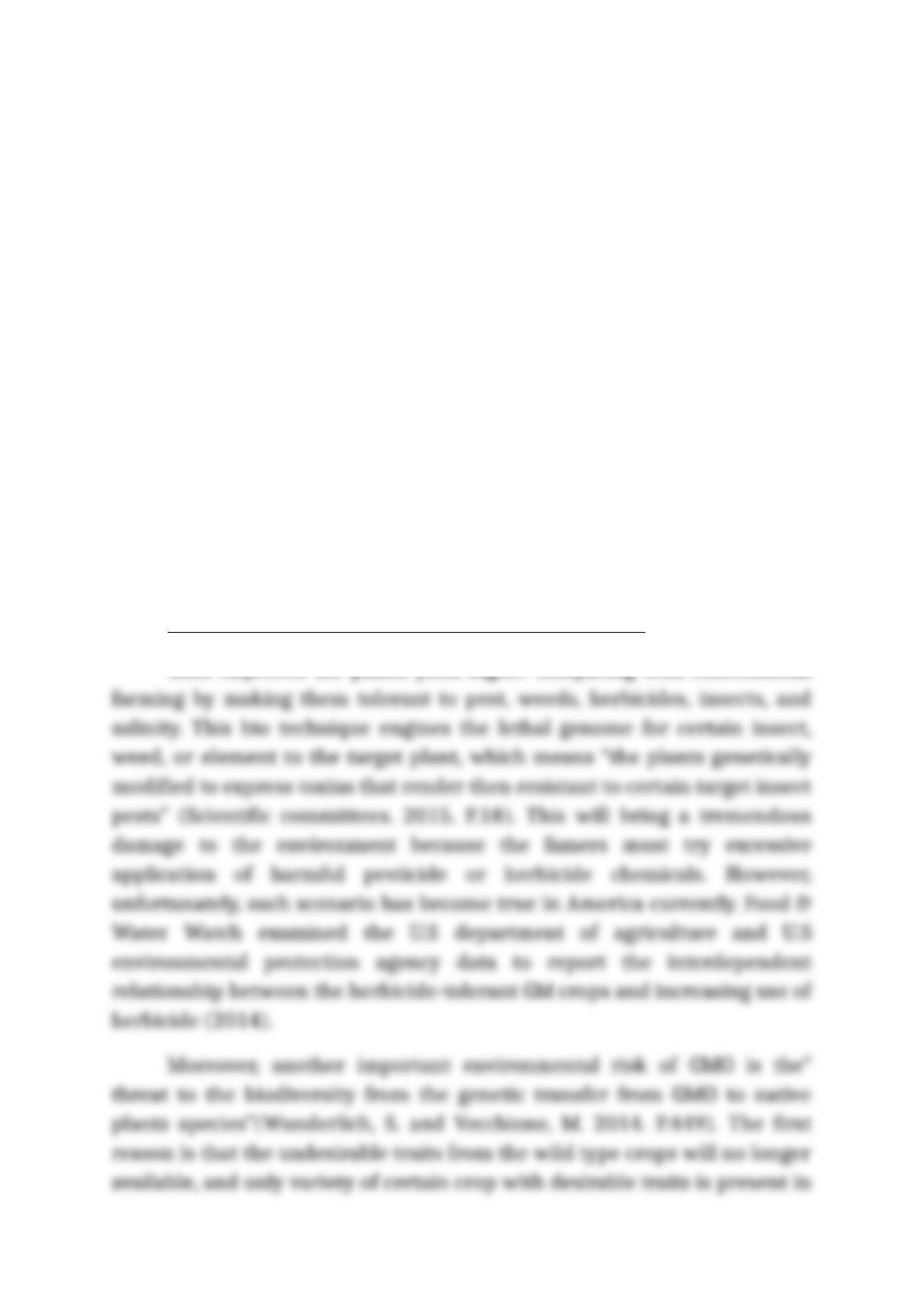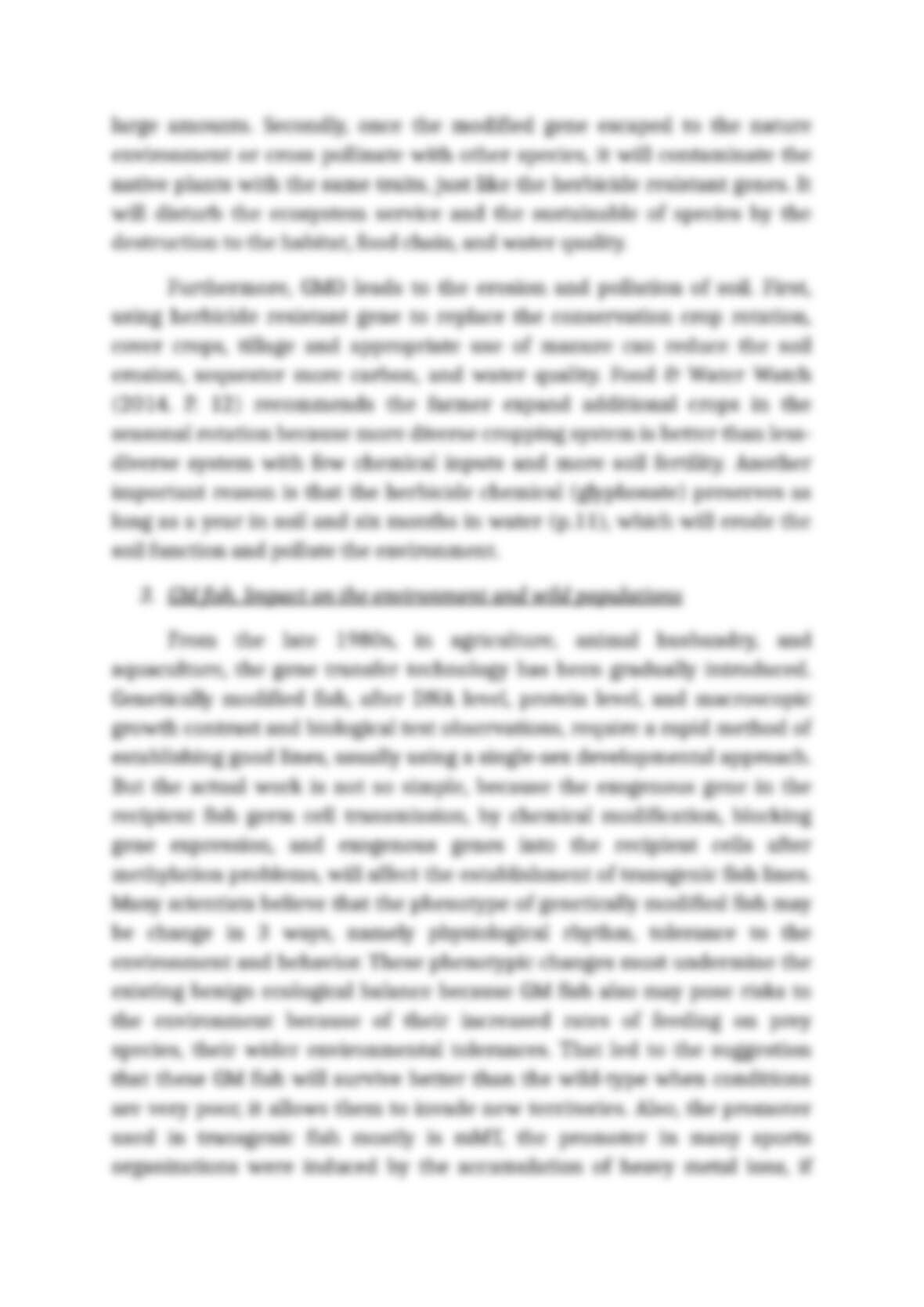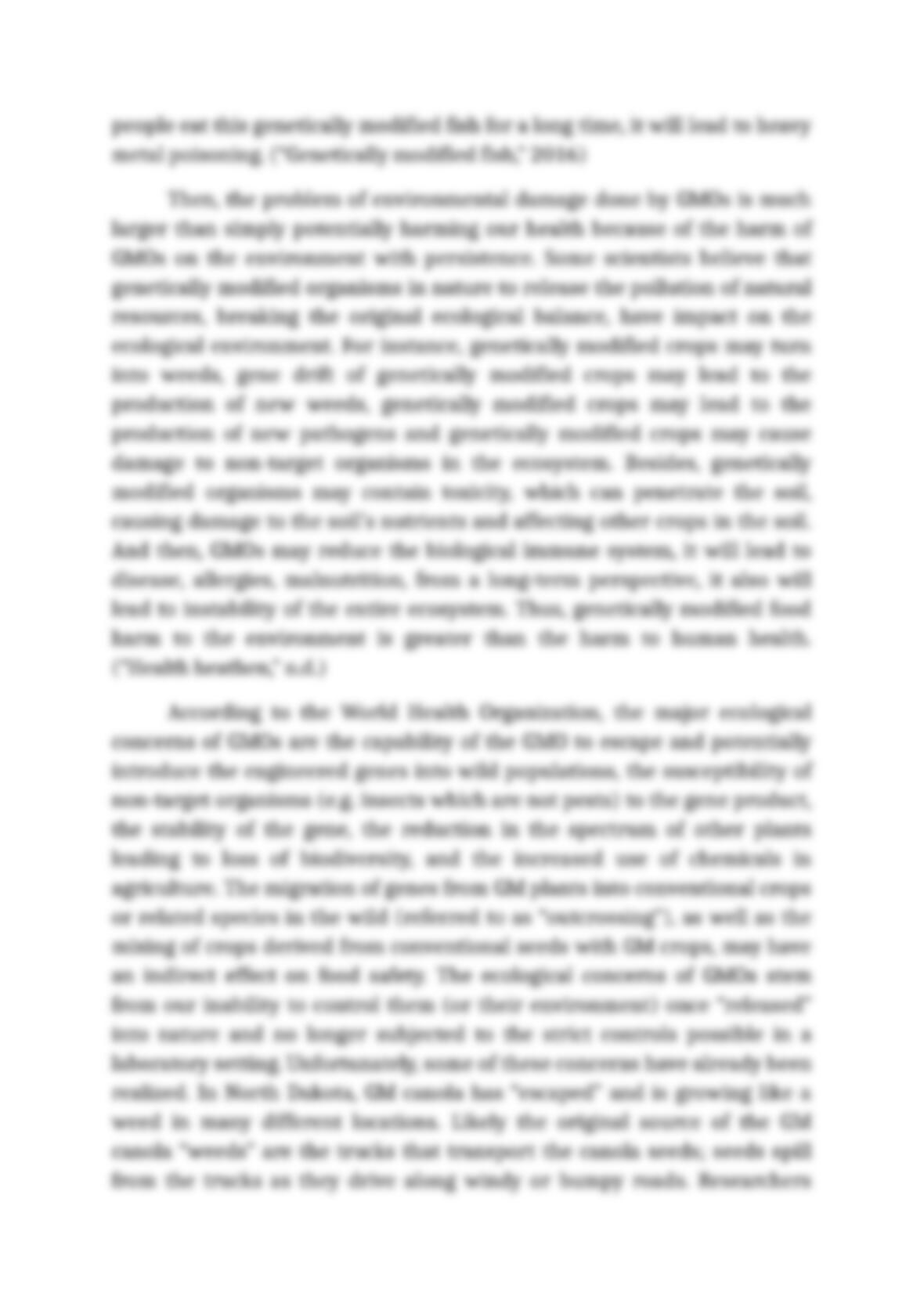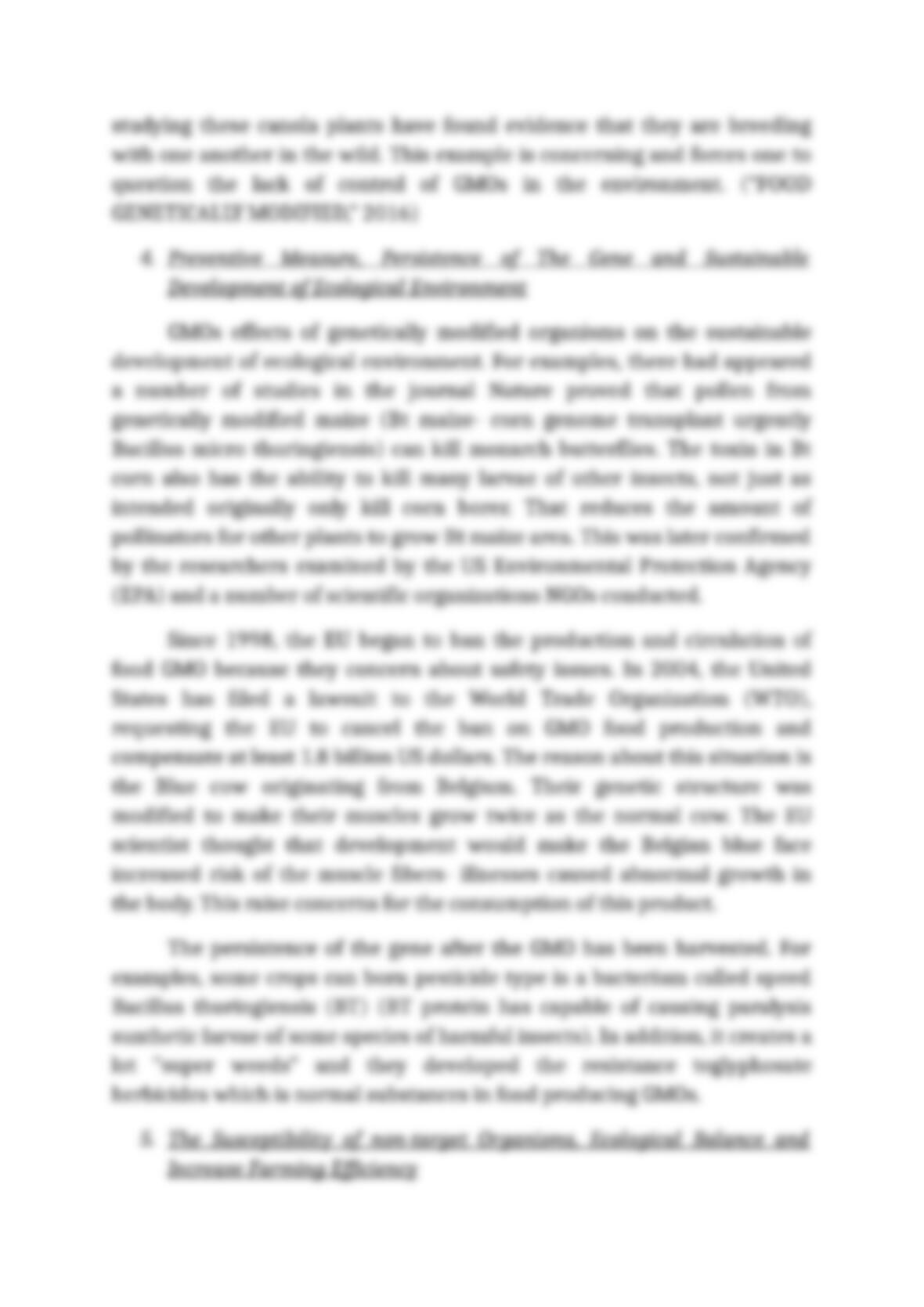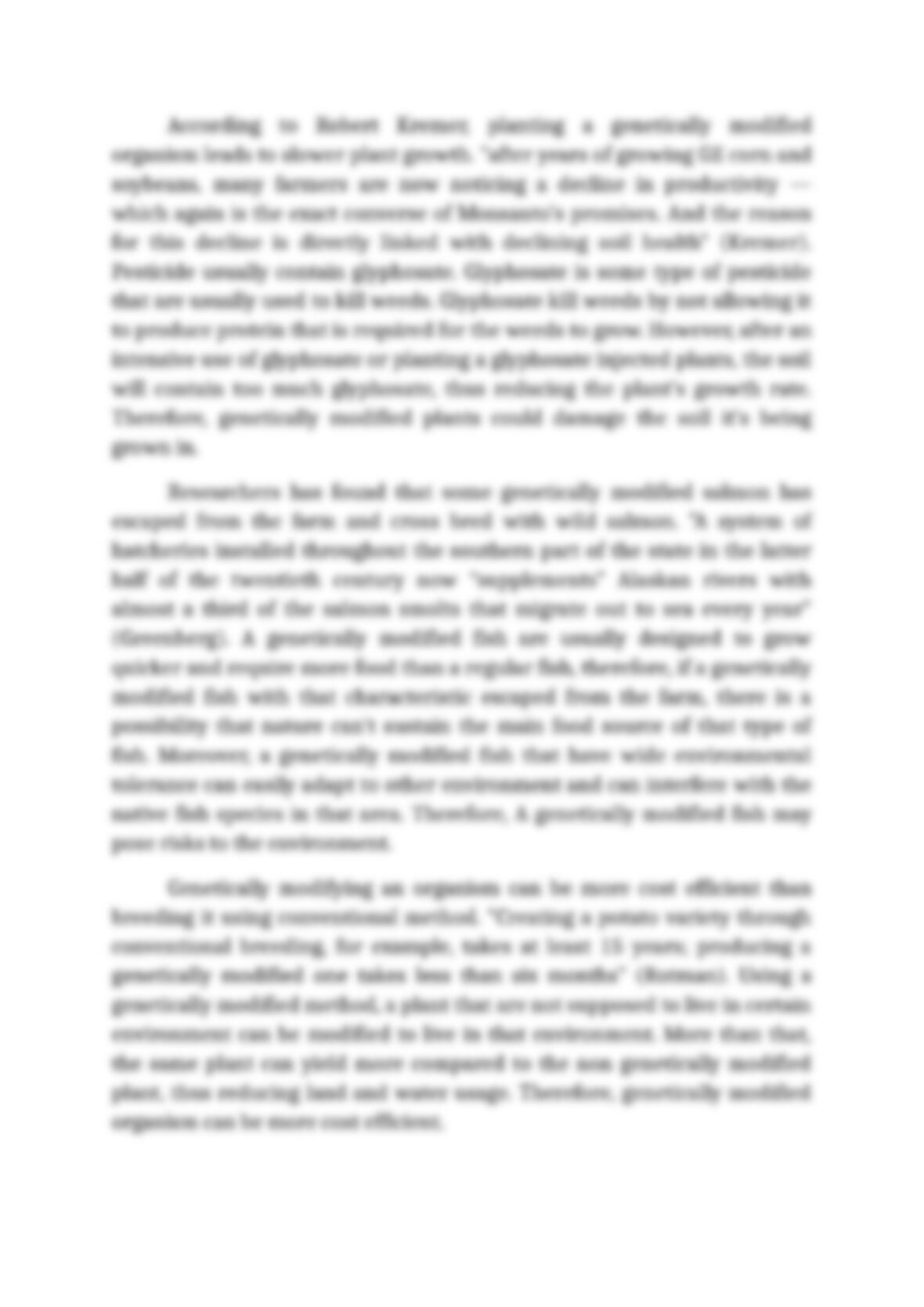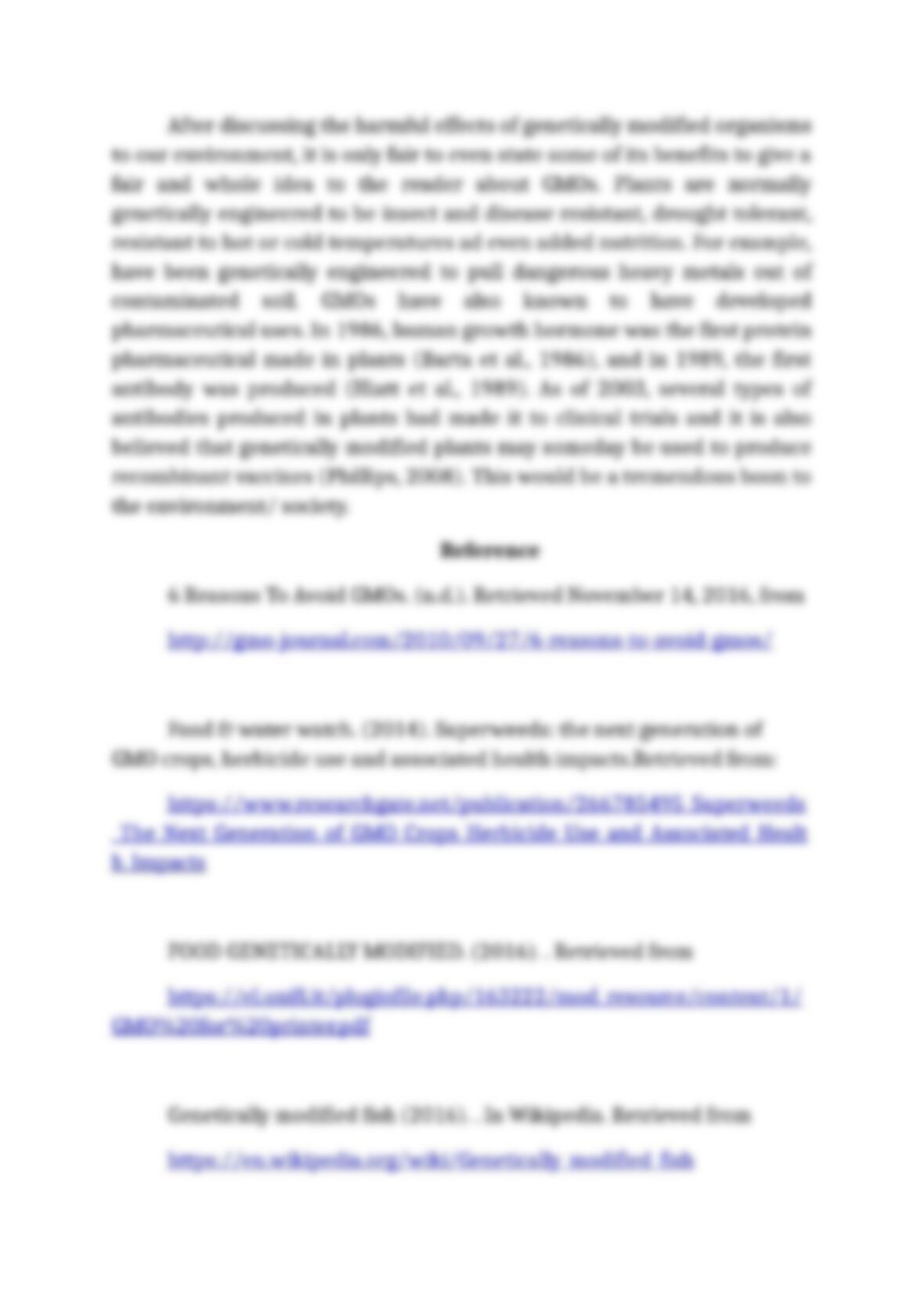INTRODUCTION
Science is a powerful tools which has made a huge change in our life.
The recent scientific progress in biotechnology is genetically modified organism
(GMO). The World Health Organization defines them as organisms who’s DNA
has been altered in an unnatural way. They are basically organisms that have
been produced artificially by inserting chemicals/ DNAs of a different
organisms into one to make it more resistant or last longer. The advent of GMO
brings tremendous economic benefit to human and provide the enough food for
the growing human population. The US produced 40% GMO crops in the global
area including soybean, cotton, and corn. However, many institution concern
that GMO have more negative effects on the environment rather than positive,
because of its harmful effects on the sustainable development of the ecological
environment, the damage it causes to the soil, and the toxicity that it spreads. In
this article, we will elaborate these harmful effects of GMO to the environment
including the toxicity, loss of biodiversity and the contamination to non-target
organisms, and also the benefits of it to give a fair idea of GMO. Finally, we
will conclude with the thoughts of GMO on the sustainable environmental
development.
BODY PARAGRAPH
1. Toxicity of GMOs And Effects of GMOs on insects
GM plants are usually changed to be insect resistant, virus resistant,
or herbicide tolerant. With these changes come some potentially
problematic environmental challenges. Now that we know what GMOs are
exactly and how plants are genetically modified, we should also know the
harmful effects of these to the environment and us humans. The first most
talked about issue is the toxicity that comes with genetically modified
crops. Toxicity is a huge issue surrounding chemical pesticide and
herbicide, the genetically modified crops require a large supply of
insecticide/ herbicide to be sprayed on them for them to grow well and in
the desirable way. These large amounts of insecticides sprayed on the field
cause an increase in the levels of toxicity in the soil or on the environment.
Apart from the soil, GM crops are toxic to non-target organisms as
well such as bees, butterflies, and birds. Along with these, like I mentioned
